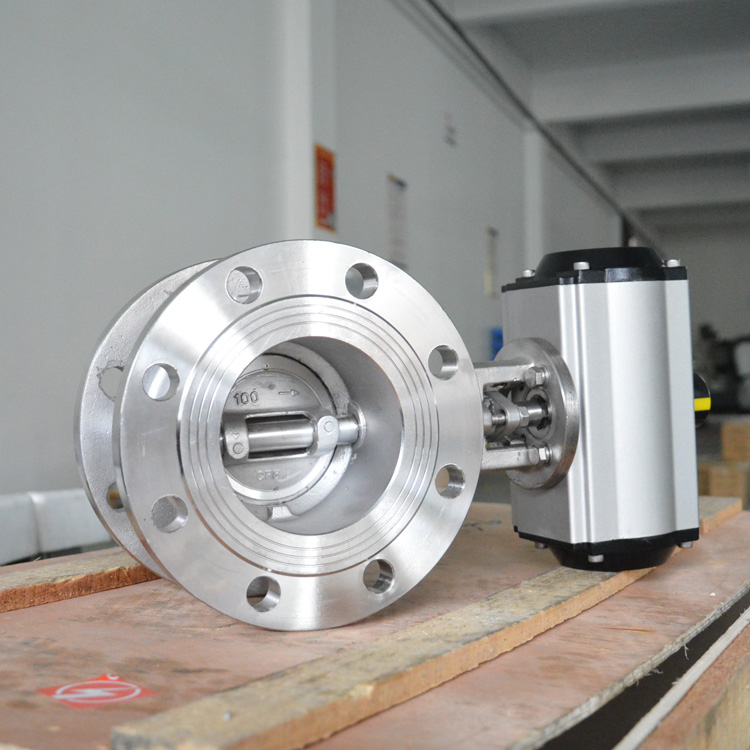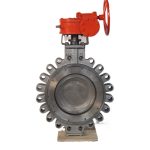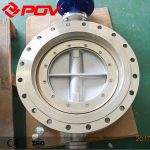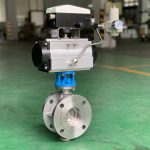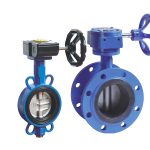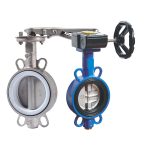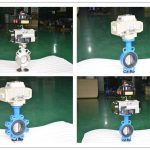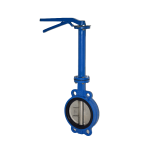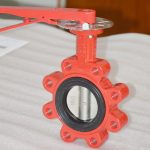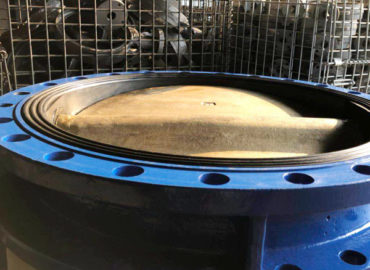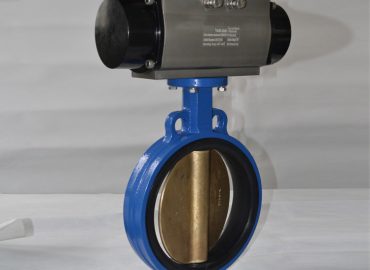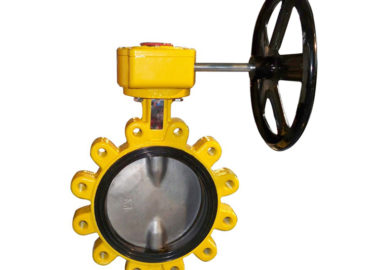In an array of industries where extreme conditions are the norm, the need for durable and reliable equipment is paramount. One such critical component is the valve, with the Metal Seated Butterfly Valve standing out due to its robustness and adaptability. These valves are specifically designed to withstand high temperatures, corrosive materials, and high pressures often encountered in harsh operating environments12. The advantage of metal seats over soft seats lies in their longevity, better sealing performance, and lower maintenance requirements34. This makes them an ideal choice for applications where resilience and durability are critical. With their ability to handle high pressure, resist corrosion, and endure high temperatures, Metal Seated Butterfly Valves offer significant benefits in challenging conditions.
Introduction
Metal seat butterfly valve offer a wealth of benefits in harsh operating environments, making them an ideal choice for many industries. Firstly, their robust design and high-quality materials provide superior durability, enabling them to withstand extreme temperatures, high pressures, and corrosive substances. This makes them particularly valuable in industries such as oil and gas, power generation, chemical processing, and mining, where conditions can be exceptionally harsh. Moreover, metal-seated butterfly valves are designed to maintain tight sealing even in the face of intense wear and tear, ensuring that they continue to operate efficiently and effectively over time. They also offer excellent flow control, enabling operators to precisely manage the flow of fluids or gases through the system. Furthermore, the maintenance requirements for these valves are relatively low, thanks to their robust construction and resistance to damage. This not only reduces the downtime associated with maintenance activities but also contributes to lower overall operating costs. Finally, the flexibility of metal-seated butterfly valves is another key benefit. They can be used with a wide range of media, including liquids, gases, and slurries, and can be adapted to suit various pipe sizes and configurations. This versatility makes them a highly practical solution for a broad spectrum of applications in harsh operating environments.
Brief introduction about the importance of valves in various industries.
Valves play an indispensable role in a myriad of industries, from oil and gas, petrochemical, water treatment, to power generation and more. They act as control devices, regulating the flow and pressure of liquids, gases, and slurries within pipelines and other equipment. This intricate function can significantly affect the efficiency, safety, and overall performance of industrial operations. Depending on their specific design and material, valves can handle different operating conditions and substances, making them versatile tools. Given their pivotal role, selecting the appropriate valve for a particular application is crucial. In this context, Metal Seated Butterfly Valve have emerged as a reliable choice, especially in harsh operating environments. Their unique features provide several advantages that enhance operational efficiency and longevity, thereby contributing positively to multiple industries.
Introducing the focus of the article: Metal Seated Butterfly Valves.
Metal Seated Butterfly Valves, as their name suggests, feature a metal seat that provides superior performance in high-temperature applications and harsh operating conditions. These valves are characterized by their durability, versatility, and high performance, making them an essential component in a wide range of industrial applications. Companies like Bray, Delta T Valves, A-T Controls, Neles, and Huamei Machinery, among others, offer various models of these valves, each designed to meet specific operational needs. They are available in different styles, such as the wafer style, lug style, and triple offset valve, to cater to diverse industrial requirements. Their designs often incorporate features like thin profile discs, ISO mounting, and shafts, and are rated for high pressures. The focus of this article is to delve deeper into the benefits and uses of these Metal Seated Butterfly Valves, particularly in harsh operating environments.
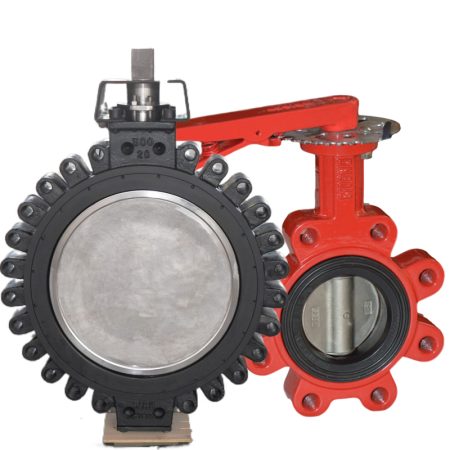
Understanding Metal Seated Butterfly Valve
Metal Seated Butterfly Valves are a type of quarter-turn valve which regulates the flow of fluid in a system. The ‘butterfly’ is a metal disc mounted on a rod, and when the valve is closed, the disc is turned so that it completely blocks off the passageway. When the valve is fully open, the disc is rotated a quarter turn so that it allows unrestricted passage. The position of the disc is effected from outside the valve. The unique aspect of these valves is their metal seat, which provides superior performance compared to soft-seated versions. This can withstand significantly higher temperatures and pressures, making them ideal for applications in industries where harsh conditions are common, such as power generation, oil and gas, and chemical processing. These valves are known for their durability, corrosion resistance, and ability to provide a tight seal even under extreme conditions. They are also appreciated for their low maintenance requirements, cost-effectiveness, and adaptability to a wide range of media, including liquids, gases, and slurries. While there are different types of metal seated butterfly valves available, such as wafer style, lug style, and triple offset, all of them serve the same primary function – to control the flow of substances within a system.
What are Metal Seated Butterfly Valve?
Metal Seated Pneumatic Butterfly Valves are specialized types of valves designed for regulating the flow of liquids and gases. They are characterized by a metal seat, which offers higher tensile strength and is well-suited for high-temperature applications. The structure of these valves creates a bubble-tight shutoff that prevents leaks, resulting in lower friction and improved flow control. Some versions of these valves, like the triple offset butterfly valve, offer bi-directional tightness at maximum pressure. They consist of two halves and the closing mechanism is a disc that sits in the center of the valve. These valves come in different styles such as wafer style and lug style, and are rated to handle significant pressures.
How do they work?
Metal Seated Butterfly Valves work by using a disc, which is positioned in the center of the pipe. The disc is connected to an actuator (either manual or automatic) via a rod or shaft. When the actuator is turned, it rotates the disc either parallel or perpendicular to the flow. In the fully open position, the disc is turned so that it allows the flow to pass through the full opening of the pipe. As the actuator is turned towards the closed position, the disc rotates and begins to obstruct the flow path, reducing the flow rate. In the fully closed position, the disc is perpendicular to the flow, completely blocking it. The metal seat of the valve provides a durable and tight seal when the valve is closed, preventing any leakage. It’s the rotation of the disc that controls the flow of the medium (be it gas, liquid, or semi-liquid), thus allowing for precise flow control.
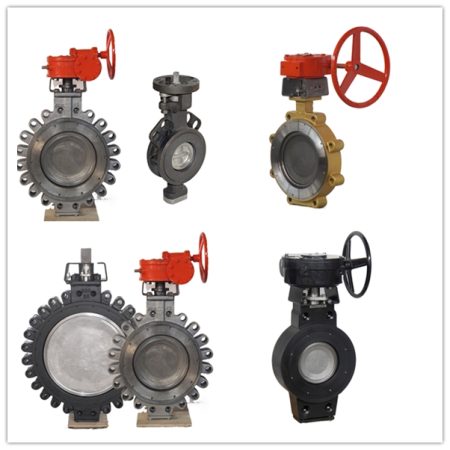
Where are they typically used?
Metal Seated Butterfly Valves are typically used in a wide array of industries due to their robustness and versatility. They are commonly found in the oil and gas industry, where they handle crude oil, natural gas, and petrochemicals under high pressure and temperature conditions. In power generation plants, these valves are used for steam isolation and cooling water systems. The chemical industry also employs these valves for handling corrosive and toxic substances. In water and wastewater treatment facilities, metal seated butterfly valves control the flow of water and other fluids throughout the treatment process. They are also used in pulp and paper mills, where they manage the flow of thick, fibrous slurries. Additionally, they find applications in HVAC systems for controlling the heating and cooling medium flow. Their ability to withstand harsh conditions and provide reliable performance makes them a preferred choice in these diverse settings.
The Challenges of Harsh Operating Environments
Harsh operating environments pose a multitude of challenges for industries and the equipment they utilize. These environments can include settings with extreme temperatures, high pressures, corrosive substances, heavy loads, or abrasive materials. Extreme temperatures, whether hot or cold, can cause materials to expand or contract, leading to potential failure or malfunctions in machinery. High pressures can put immense stress on equipment, increasing the risk of leaks or ruptures. Corrosive substances can degrade materials over time, compromising the integrity and safety of the equipment. In environments where heavy loads or abrasive materials are present, equipment is subject to wear and tear at an accelerated rate, which can lead to frequent breakdowns and costly replacements. Furthermore, these conditions often require specialized equipment and materials that can withstand such rigors, which can significantly increase operational costs. Ensuring worker safety is another major challenge, as harsh environments can be hazardous and require stringent safety protocols and protective gear. Lastly, maintaining optimal performance and efficiency in such conditions requires regular monitoring and maintenance, adding to the complexity and cost of operations. Despite these challenges, many industries must operate within these harsh environments, necessitating the development and use of advanced, durable, and resilient technology and materials.
Description of what constitutes a harsh operating environment.
A harsh operating environment refers to any setting that presents challenging conditions for equipment and machinery, potentially impacting their performance, durability, and lifespan. Such environments can be characterized by extreme temperatures, either high or low, that may cause thermal stress on materials. They may also involve exposure to corrosive substances, abrasive materials, or high levels of radiation, which can degrade equipment over time. High-pressure conditions, such as those found in deep-sea operations or high-altitude applications, are another defining feature of harsh environments. Additionally, harsh operating environments can include settings with high levels of vibration, heavy dust, or moisture. These conditions demand equipment and components that are specially designed and built to withstand such extremes, ensuring reliability, safety, and efficiency in operation.
Common challenges faced by valves in such conditions, including high temperatures, corrosive materials, and high pressure.
Valves, including Metal Seated Butterfly Valves, face several challenges when operating under high-temperature, corrosive, and high-pressure conditions. One of the most common problems is mechanical wear and tear, which can be accelerated by high temperatures and corrosive materials. Cavitation, a process where rapid changes of pressure in a liquid lead to the formation of small vapor-filled cavities, is another issue that can damage the valve components over time. Erosion, often caused by the abrasive action of the fluid passing through the valve, can also lead to valve failure. In high-temperature environments, there’s a risk of disbonding or the loss of isolation integrity, which can compromise the valve’s performance. Additionally, incorrect valve selection or improper installation can exacerbate these issues. Lastly, high-pressure applications present unique challenges for valve sealing, requiring careful consideration of materials and design to ensure safe operation.
Advantages of Metal Seated Butterfly Valve in Harsh Conditions
Metal Seated Butterfly Valves have several distinct advantages, particularly in harsh conditions. One of their key benefits is their ability to handle extreme temperatures and pressures, making them suitable for industries such as oil and gas, power generation, and chemical processing. Unlike other types of valves, the metal seated butterfly valves are designed with a seat made of metal, which contributes to their ability to withstand higher temperature and pressure ratings. This makes them ideal for applications where the conditions are too severe for softer materials. Moreover, the metal seated structure of these valves creates a bubble-tight shutoff that prevents leaks, resulting in lower friction and better flow control. This ensures efficient operation even in demanding environments. Additionally, butterfly valves, in general, are appreciated for their compact design and lightweight nature, which offer reasonable flow control. They also occupy less space compared to other valve types, which can be a significant advantage in applications where space is at a premium. While they do induce pressure drops across pipe sections, the strain on the pumps is typically manageable. Furthermore, the durability of the metal seat extends the service life of these valves, making them a cost-effective choice over time.

High temperature resistance: Explanation of how metal seats can withstand higher temperatures compared to their soft-seated counterparts.
Metal seated valves are designed to withstand high temperatures and severe service conditions, a key advantage they hold over their soft-seated counterparts. The metal seats in these valves can tolerate temperatures up to 540℃, with the exact limit depending on the specific materials used for the body and trim of the valve. This makes them suitable for industries where operations involve high-temperature processes. On the other hand, soft-seated valves, which typically use elastomer seals or similar materials, have a considerably lower temperature limit, around 220° C (450° F). As the application approaches these temperatures, the seal material becomes softer and is more susceptible to damage or failure. While soft-seated valves provide a higher degree of seat tightness, their performance can be compromised in high-temperature environments. In contrast, metal-seated valves offer greater resistance to erosion and abrasion, leading to a longer service life even under harsh conditions. Therefore, in applications that require high temperature resistance, metal seated valves are often the preferred choice .
Durability: Discuss how these valves are designed for longevity even under the most challenging conditions.
Metal Seated Butterfly Valves are designed with durability and longevity in mind, even under the most challenging conditions. The core of their robustness lies in their material construction. These valves are typically made from high-grade metals such as stainless steel, which is known for its excellent resistance to corrosion, high temperatures, and high pressures. The metal seats in these valves provide a tight seal that effectively prevents leaks, even under extreme pressure differentials. Additionally, the disc and stem of the valve are designed to withstand high levels of torque without deformation. Special surface treatments or coatings may be applied to further enhance their resistance to wear and tear. The design of these valves often includes features to reduce friction and facilitate smooth operation, contributing to their long service life. All these design elements come together to ensure that Metal Seated Butterfly Valves can reliably perform their function over an extended period, even when subjected to harsh operating environments.
Corrosion resistance: Detail how the metal construction can resist corrosive substances.
Metal construction can resist corrosive substances through the use of certain types of metals known for their corrosion-resistant properties and the application of protective coatings. Corrosion-resistant metals such as stainless steel, aluminum, copper, bronze, brass, red metals, and galvanized steel are often used in construction due to their ability to avoid tarnishing and withstand harsh environmental conditions. Stainless steel, for instance, contains chromium which forms a passive layer of chromium oxide on the surface of the metal, providing protection against corrosion. Another method to enhance corrosion resistance is galvanizing, where a thin layer of zinc or magnesium is applied to steel components. This coating acts sacrificially, corroding before the underlying steel does, thereby protecting the structural integrity of the metal. Additionally, thermally sprayed coatings of zinc, aluminum, and zinc-aluminum alloys can provide long-term corrosion protection to steel structures exposed to aggressive conditions. The choice of corrosion-resistant metal or protective coating depends largely on the specific requirements of the project and the environmental conditions the structure will be exposed to.
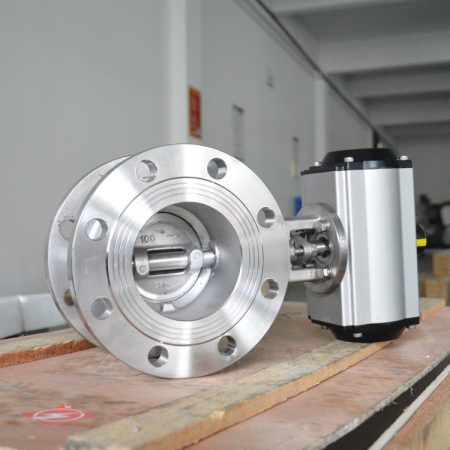
High pressure handling: Explain how these valves can handle high pressures without compromising performance or safety.
Metal Seated Butterfly Valves are designed to handle high pressures without compromising performance or safety. Their structure is such that they can endure significant forces exerted by the fluid flow. The metal seat, typically made from durable materials like stainless steel or other alloys, provides resistance against the high-pressure fluid flow. This robust construction ensures that the valve remains intact even under extreme pressure conditions. Additionally, these valves are engineered to provide a tight seal, preventing any leakage of the high-pressure fluid. This sealing capability is critical in maintaining the valve’s performance and the overall system’s safety. Furthermore, the design of butterfly valves allows for efficient fluid control, even at high pressures. The disc within the valve, which controls the fluid flow, can be rotated to manage the degree of opening. This gives operators precise control over the flow rate, regardless of the pressure. Hence, Metal Seated Butterfly Valves, through their robust build and efficient design, ensure safe and effective operation under high-pressure conditions.
Case Studies
Case studies of metal seated butterfly valves in harsh operating environments underscore their numerous benefits. For instance, within the power generation industry, these valves have been instrumental in maintaining system integrity in high-temperature steam applications. The metal seats’ ability to withstand temperatures up to 540℃ has allowed for efficient flow control and system stability, even when dealing with superheated steam. Similarly, in the oil and gas sector, metal seated butterfly valves have proven their worth in high-pressure scenarios, such as those encountered during hydrocarbon processing. Their robust design and durable construction have ensured reliable operation and minimized downtime due to maintenance or component failure. In another case study, a chemical processing plant dealing with highly corrosive materials found that their traditional soft-seated valves were deteriorating rapidly due to the harsh conditions. After replacing them with metal seated butterfly valves, the plant saw a significant improvement in valve longevity and overall process efficiency. These case studies highlight the advantages of metal seated butterfly valves in challenging environments, including their superior temperature and pressure handling capabilities, durability, and cost-effectiveness over time.
Present real-world examples where Metal Seated Butterfly Valve have shown remarkable performance in harsh operating environments.
In real-world applications, Metal Seated Butterfly Valves have shown exceptional performance in harsh operating environments. These valves are highly resistant to corrosive liquids and gases, which allows for their prolonged use in severe conditions. For instance, the Triple Offset Butterfly Valves, a type of metal seated butterfly valve, can handle high pressure and offer lower emissions, showcasing their robustness and efficiency in various environments. Neles™ butterfly valves, which have been in operation for 40 years, are designed to optimize process operations’ efficiency by offering best-in-class valve capacity. This demonstrates their long-term reliability and superior performance even under challenging conditions. Moreover, the On-Center Resilient Seated Butterfly Valve can handle pressures up to 175 psi (1210 kPa) in 2-12” sizes and to 150 psi (1030 kPa) in 14-24” sizes. These examples illustrate the ability of Metal Seated Butterfly Valves to deliver reliable performance, even in demanding industrial settings.
Discuss the impact of their usage on the overall operations and cost-efficiency.
The use of Metal Seated Butterfly Valves can significantly impact overall operations and cost-efficiency in a positive way. First, their robust and durable design reduces the need for frequent replacements or extensive maintenance, which can lead to substantial cost savings over time. Their ability to handle high pressures and resist corrosion expands their applicability across various challenging environments, thereby reducing the need for different types of valves for different conditions. This simplifies inventory management and decreases operational complexity. Furthermore, these valves are known for their precise control over fluid flow, which can improve the efficiency of the overall system, minimizing waste and saving on resource costs. The tight seal they provide also prevents leaks, which not only improves safety but also avoids wastage of materials, contributing to cost-effectiveness. Lastly, their simple design and operation mean less training is required for staff, reducing training costs. Therefore, the use of Metal Seated Butterfly Valves can have a profound positive impact on operational effectiveness and cost-efficiency.
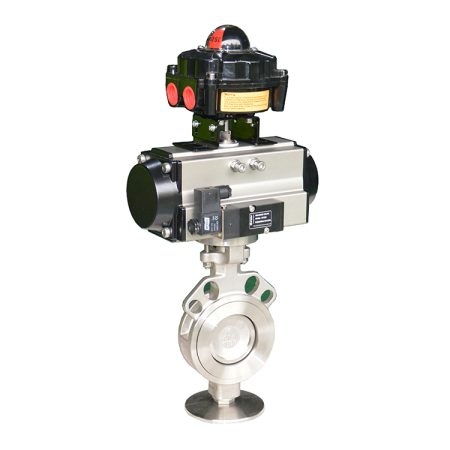
Choosing the Right Metal Seated Butterfly Valve
Choosing the right Metal Seated Butterfly Valve is a critical decision that can significantly impact the efficiency and safety of your fluid control systems. There are several factors to consider when making your choice. Firstly, the pressure and temperature conditions in which the valve will operate are crucial. Metal Seated Butterfly Valves are typically suitable for high-pressure and high-temperature environments due to their robust construction. If your system operates under such conditions, these valves would be an appropriate choice. Secondly, the type of fluid being controlled also matters. Some metals may corrode or degrade when exposed to certain fluids, so it’s important to select a valve made from a material compatible with the fluid in your system. Thirdly, consider the valve size needed for your system. The valve size should match the pipe size to ensure optimal flow control and reduce the risk of leakage. Fourthly, take into account the necessary flow control precision. Butterfly valves offer excellent flow control capabilities, allowing operators to adjust the disc position for precise fluid flow management. Lastly, consider the manufacturer’s reputation and after-sales service. High-quality valves from reputable manufacturers may come with warranties and technical support, which can be beneficial in the long run. By considering these factors, you can choose the right Metal Seated Butterfly Valve that meets your specific requirements and ensures efficient and safe operation of your fluid control system.
Factors to consider when choosing a valve for harsh conditions.
When choosing a valve for harsh conditions, several factors need to be taken into consideration. First and foremost, the material of the valve is critical. The valve should be made from materials that can withstand high temperatures, pressures, and corrosive substances. For instance, metal seated valves are often preferred in such environments due to their durability and resistance to wear. Secondly, the type of fluid being controlled is also a key consideration. The valve should be compatible with the fluid to prevent any reactions that could compromise its functionality or the safety of the system. Thirdly, the operational conditions such as pressure and temperature ranges should be considered. The valve should be capable of functioning optimally within the given ranges. Additionally, the maintenance requirements of the valve should be evaluated. Valves that require minimal maintenance are typically more cost-effective in the long run. Lastly, the ease of installation and operation of the valve should be taken into account. A valve that is easy to install and operate will result in reduced downtime and improved productivity.
Brief overview of different manufacturers and models.
There is a wide range of manufacturers producing various models of metal seated butterfly valves, each bringing their unique features and specifications to cater to different needs. Emerson, for instance, offers its Keystone series, which includes the resilient seated butterfly valve known for its durability and high performance in demanding applications. Flowserve, another prominent manufacturer, offers its Durco BX series which are designed for improved flow control, extended service life, and reduced maintenance in severe services. Bray International’s Tri Lok series is another notable model, recognized for its triple offset design that ensures zero leakage even under high temperatures and pressures. DeZURIK manufactures the BHP High Performance Butterfly Valves that are designed for superior performance in high temperature and high-pressure applications. Finally, KITZ Corporation, a leading Japanese manufacturer, offers its unique AJ series which features an adjustable gland packing system and replaceable seat ring, enabling easy maintenance and long service life.
Conclusion
In conclusion, the numerous benefits of Metal Seated Butterfly Valves in harsh operating environments extend beyond their immediate functional attributes. These valves have proven to be a critical component in various industries, including power generation, oil and gas, and chemical processing, where they perform under high-temperature, high-pressure, and corrosive conditions.
Their ability to withstand extreme temperatures up to 540℃ and high pressure makes them highly desired in high-demand applications. They offer superior durability and longevity compared to traditional soft-seated valves, reducing the frequency of maintenance and replacements, which significantly impacts the cost-efficiency of operations.
Moreover, the precision control these valves provide over fluid flow enhances overall system efficiency, minimizing waste, and saving on resource costs. They also offer a tight seal, preventing leaks that can lead to material wastage and safety issues.
The simplicity of their design and operation reduces the need for extensive staff training, further contributing to cost savings. With their robust design and excellent performance in severe conditions, Metal Seated Butterfly Valves have indeed proven to be a reliable choice for challenging industrial settings.
The case studies highlighted throughout this blog post reaffirm the invaluable role these valves play in maintaining operational efficiency and cost-effectiveness. As industries continue to evolve and operate in increasingly harsh environments, the demand for durable and reliable components like the Metal Seated Butterfly Valve will only grow. It is, therefore, safe to say that investing in these valves is a strategic move towards sustainable and efficient operations.
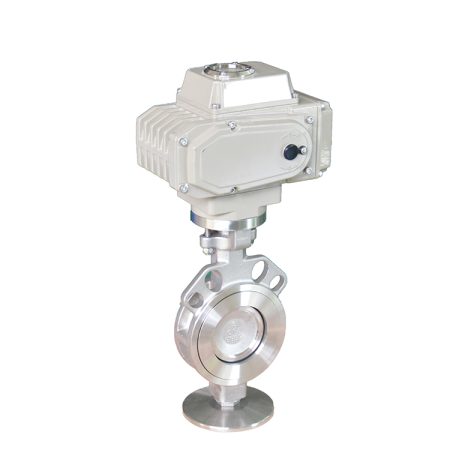
Recap of the benefits of using metal seated butterfly valve in harsh operating environments.
Metal Seated Butterfly Valves offer several benefits when used in harsh operating environments. First and foremost, they are highly resistant to corrosive liquids and gases, which allows for their prolonged use in severe conditions. This durability is a significant advantage, especially in industries where the equipment is regularly exposed to corrosive substances. Additionally, their design affords excellent sealing performance, which ensures a tight, leak-free connection, even under high pressure. This quality makes them particularly useful in environments where strong seals are critical. Furthermore, certain types, like the Triple Offset Butterfly Valves, can handle high pressure and offer lower emissions, making them suitable for a variety of environments. Another key advantage of these valves is the reduction of space and weight they bring to a system compared to other options like ball or check valves. Lastly, compared to soft seated valves, metal seated valves can withstand critical applications and endure high temperatures, further emphasizing their suitability for harsh environments.
Encourage readers to consider these factors when deciding on the best valves for their needs.
When deciding on the best valves for your needs, it’s crucial to carefully consider these factors. The material of the control valve, the type of fluid it will control, operational conditions, maintenance requirements, and ease of installation and operation all play a significant role in determining the suitability of a valve for your specific needs. A well-chosen valve can enhance the efficiency and safety of your system, while a poorly chosen one could lead to operational issues, increased costs, and potential safety risks. Therefore, take the time to thoroughly assess these factors. Consider the harshness of the conditions your valve will face, the compatibility with the fluids in your system, the pressure and temperature ranges it must withstand, and the ease with which it can be installed and operated. Remember, the goal is not just to find a valve that fits but to find one that optimizes your system’s performance while minimizing maintenance needs and costs. Your choice in valve can significantly influence the success of your operations, so make it a well-informed one.


